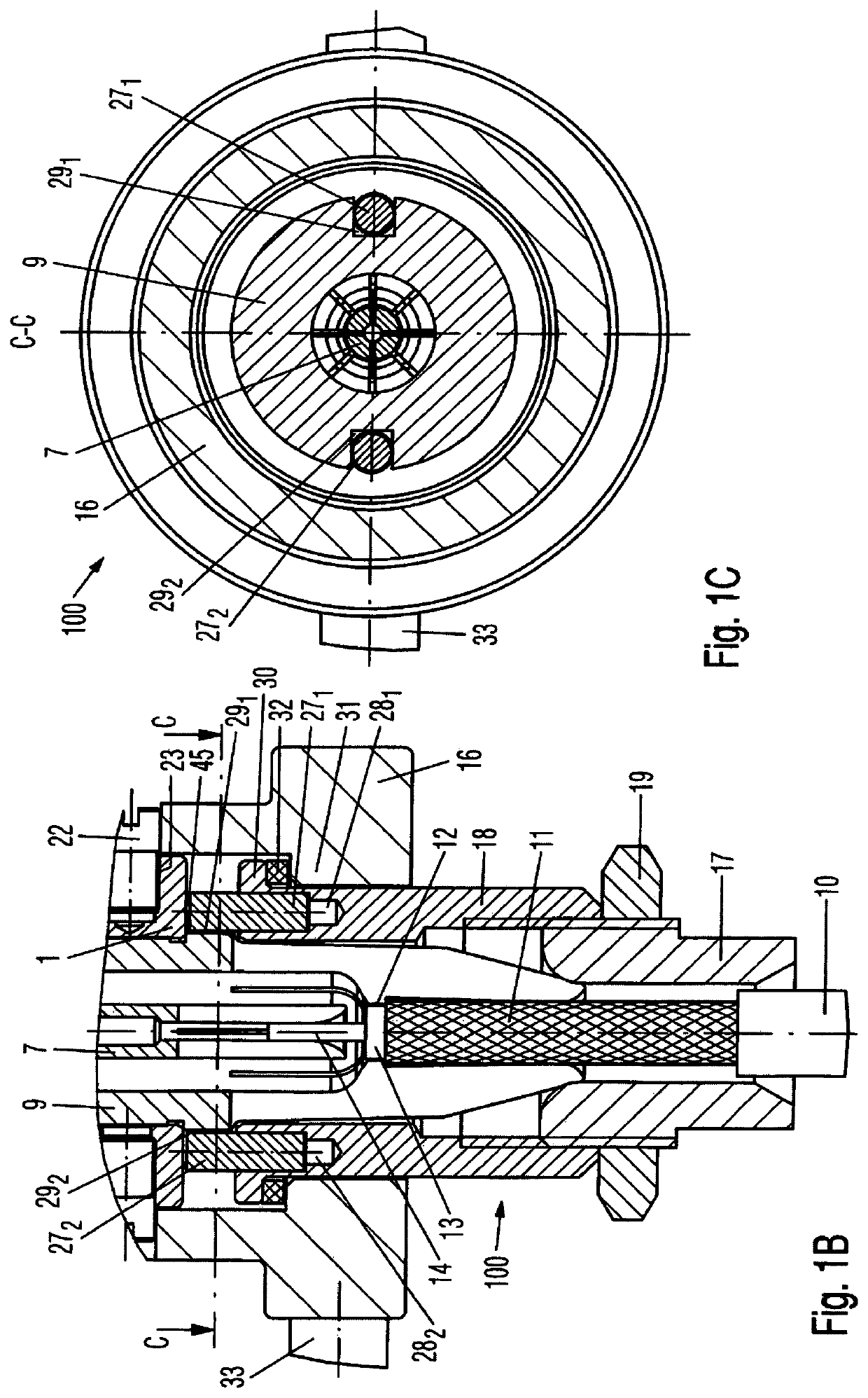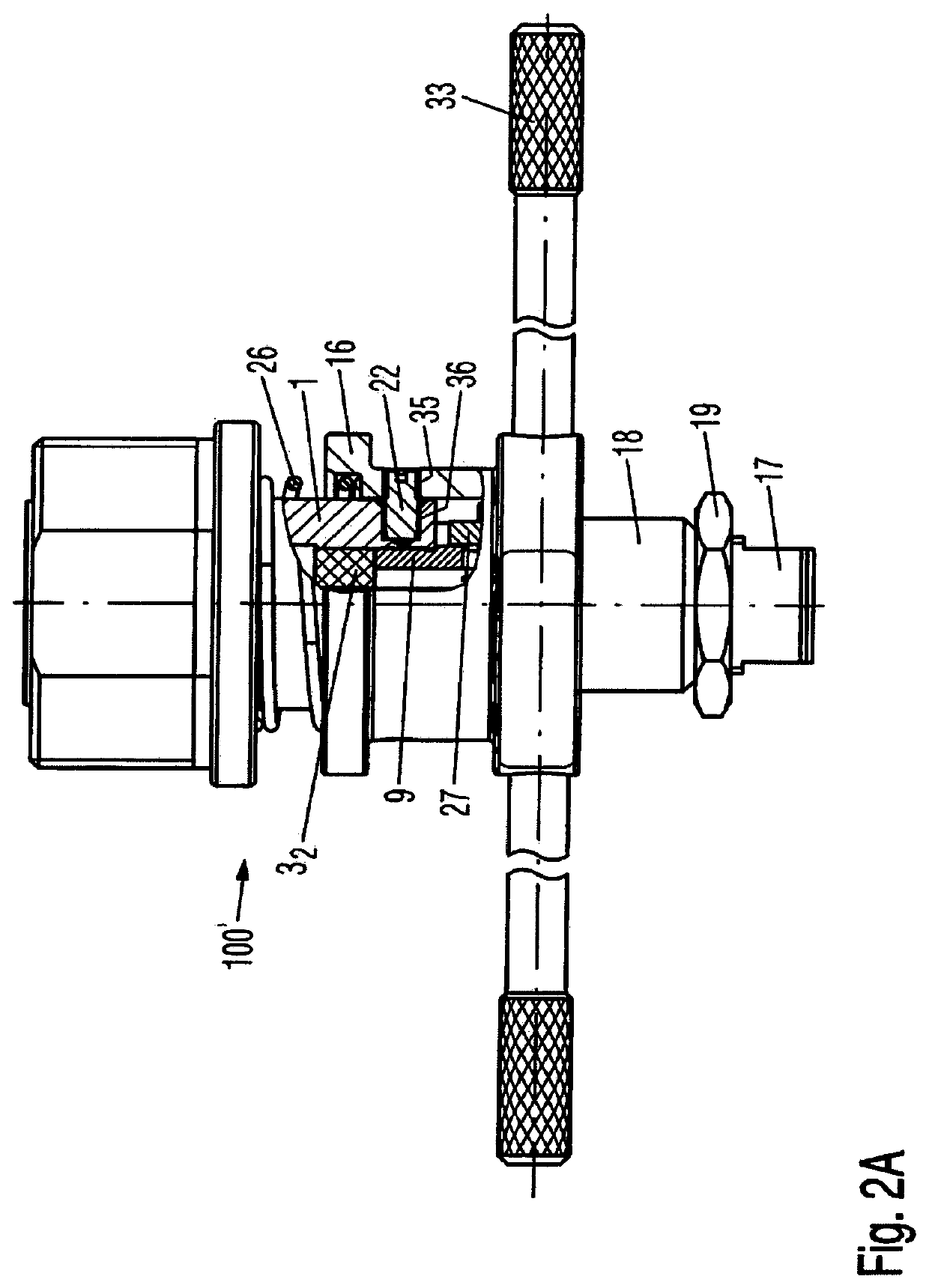Coupler between a coaxial connector and a coaxial cable
a coaxial cable and coaxial connector technology, applied in the direction of coupling device connection, coupling device part engagement/disengagement, two-part coupling device, etc., can solve the disadvantage of not reproducing the impedance transition between the coaxial cable and the coupler, and the distance and the clamping force acting between the two clamping surfaces upon the clamped-in outer conductor braid
- Summary
- Abstract
- Description
- Claims
- Application Information
AI Technical Summary
Benefits of technology
Problems solved by technology
Method used
Image
Examples
Embodiment Construction
[0033]The first embodiment 100 of the coupler in accordance with the invention is described in detail in the following on the basis of FIGS. 1A, 1B and 1C:
[0034]The coupler 100 has a first coaxial connector, which is constructed according to a coaxial plug-and-socket connector standard suitable for high-frequency signals, for example according to the Threaded Neill-Concelman (TNC) standard.
[0035]This first coaxial connector comprises a substantially hollow cylindrical outer conductor 1, an inner conductor 2, which is arranged so as to be coaxial with the outer conductor 1 and which is substantially cylindrical, and at least one insulator part 31 and 32, which adjoins, respectively, the inner cylindrical surface of the outer conductor 1 and the outer cylindrical surface of the inner conductor 2, and which is substantially in the form of a hollow cylinder.
[0036]Instead of two insulator parts 31 and 32, there may also be provided a single insulator part, which fills the entire space be...
PUM
 Login to View More
Login to View More Abstract
Description
Claims
Application Information
 Login to View More
Login to View More - R&D
- Intellectual Property
- Life Sciences
- Materials
- Tech Scout
- Unparalleled Data Quality
- Higher Quality Content
- 60% Fewer Hallucinations
Browse by: Latest US Patents, China's latest patents, Technical Efficacy Thesaurus, Application Domain, Technology Topic, Popular Technical Reports.
© 2025 PatSnap. All rights reserved.Legal|Privacy policy|Modern Slavery Act Transparency Statement|Sitemap|About US| Contact US: help@patsnap.com



